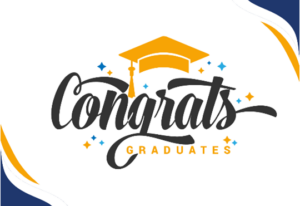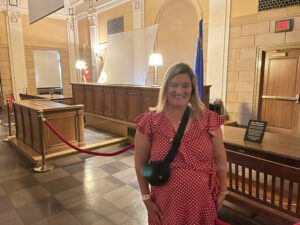By Lauren E. Storck
Do you know the origin of the word caption? The old history of the word is to capture or seize. How wonderful is that? It’s a good fit for text that captures the meaning of conversations for us – for communications and relationships – for life! Seize the day, yet first, capture all the words.
Captioning is truly much more than a mere label for a photo or a tiny bit of text in bubbles of a cartoon. Seize the words. Communicate. Use captioning on all media, and real time for life. Captioning is language. It’s speaking with text. It’s written, readable, and interactive.
By the time automatic captioning systems perfect automatic text for all human voices in all languages, we probably will have a pill to reverse deafness. (Some want it, and some don’t. We respect those choices and differences.) Meanwhile, until small and affordable machines translate any voice and all voices in groups into quality text, real time, as we all speak, we suggest we are a “captioning culture”: we live in it, we breathe it, and we advocate to expand it.
People who need and deserve quality captioning every day (not only for television, cinema, and videos) are not only people with hearing loss or deafness. Millions more able citizens, in all countries, use captioning to enhance learning – learning to read, learning new languages, and for searches online for knowledge. And yes, captioning (or subtitles, the same idea) allows access and inclusion for millions with hearing loss or deafness.
And yet, the word “captioning” has no respect! It’s beginning to earn respect, yet we have a long way to go. Forty-five years since the beginnings of relay telephones (text calling), and still, millions want more quality captioning for everyday life, and the sooner the better. No thanks, we don’t need a wheelchair, we need captioning.
Did you say a culture of captioning?
Yes. Each language in the world is a vital and essential ingredient of that culture. Many groups are interested in the development of “culture” – not only anthropologists, who study cultures professionally, but also sociologists, psychologists, politicians, economists, educators, and deaf people also.
Those who use sign language are some deaf people who have fought bravely to define and protect their own culture and language. They talk about sign language of their country and about their own deaf identity. There is also an established international sign language now.
The culture of the deaf, sometimes called Deaf Culture, deaf-hood, or a deaf identity, has other building blocks also. It’s not only built around a sign language, since it includes behaviors, customs, and attitudes – typical ingredients of any culture. Nevertheless, the language, SL, is of highest value.
Now we suggest a captioning culture. Captioning is already an international language since it’s easily translated into the language you need (text can be translated by professionals, and even automatic translations now with new technology are often better than automatic machine-only captioning).
Indeed, we refer to captioning as our language, as the world’s language. What other building blocks are there for a captioning culture. What behaviors, attitudes, expectations, and cultural norms are included?
One behavior or value is reading and literacy. In fact, captioning boosts literacy. Getting the word out globally about this (pun intended) is not easy, yet pockets of people in the United States, in India, and in other countries are captioning inclusion advocates for literacy (not for deafness and hearing loss). We belong together however.
Another attitude or value in a captioning culture is access and inclusion, and while insisting on captioning, we are open to many languages. Inclusion means that people with the full range of abilities (and dis-abilities) are valuable citizens, and societies are obliged to find resources for inclusion and using their combined many talents. Of course this attitude is not unique to our captioning culture.
A third item in a culture of captioning is an important behavior – we “speak.” Most of us do. And if not, that’s okay of course too. We are oral. Many of us, among our mega-millions, speak just the same as “hearing” people because hearing loss or deafness occurred after learning to speak (deafened we are, or hearing loss of various degrees). We don’t have an accent. We may have a language accent if we were born in one country and live now in another, yet for the most part, we haven’t accents different from all the beautiful accents of regional and national hearing people.
Our identity is mixed. We identify primarily as citizens of the country we live in, and as users of that country’s language. We speak that language as our primary language. We understand and support sign language and “deaf culture” among friends, colleagues, and others, yet we do not enjoy accusations of “resisting” sign language or “ignoring” deaf culture. We are who we are. Some are bilingual with other languages, some are multi-cultural, some use sign language also. Our identities, after all is said and done, are multi-faceted (woman, explorer, mother, captioning user, and so on.).
What other items describe a captioning culture? We are cross-cultural in the sense that we know that people who are deaf, hearing, hard of hearing, and deafened, as well as many deaf-blind, and others with different visual and learning differences, all need and use captioning for some situations. Entertainments such as films, videos, and theaters are good examples. We all need captioning – quality captioning – for these human and healthy experiences.
At the same time, we stress and value advocacy for “realtime” or “live” captioning as our receptive language – this is less well understood and much less available for many. We use real-time captioning (called CART or STTR) as our language when we are in school, at work, in meetings and conferences, during community events, political rallies, anything that’s happening!
A majority of all deaf, deafened, and people with hearing loss do not, contrary to popular media and myth, do not use sign language. Captioning is needed. Even when some use sign language, captioning for media is vital, and we join together for it. Realtime captions are immediate speech-to-text translation with display of the words (everything everyone is saying). Some say live transcription, some say fast writing, and some call it interpretation (e.g. in Nordic countries). All this is accomplished with new technologies and always along with professional providers – captioners with the right training, experience, knowledge of systems and more – to serve this large and growing need. Professional providers are the motors of our culture, and we consumers, not only with hearing differences, are the hungry communication users.
Join our culture – all welcome. See CCACaptioning.org for more information and many resources for education and advocacy.
Dr. Lauren E. Storck is the founder of CaptionMatch.com and CCACaptioning.org, a nonprofit dedicated to the proliferation of captioning. This article was originally published on the Collaborative for Communication Access via Captioning blog and is reprinted here with permission of the author.




